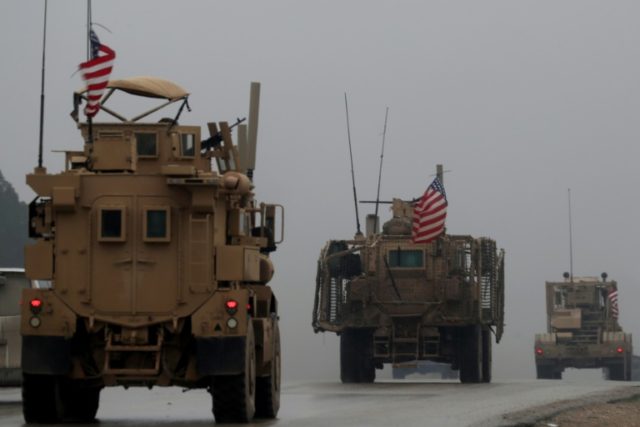The United States armed forces began the Syria withdrawal process on Friday by removing some equipment, not troops, as part of U.S. President Donald Trump’s plan to bring American service members home, several Pentagon officials reportedly clarified.
Citing Col. Sean Ryan, the spokesman for the U.S.-led coalition against the Islamic State (ISIS/ISIL), several news outlets reported that American troops had begun withdrawing from Syria on Friday.
Later in the day, however, some of those outlets conceded that the spokesman did not indicate whether any American service members were being pulled out or whether the U.S. military was carrying out other activities that could be considered a withdrawal.
In a statement, Col. Ryan said the U.S.-led coalition “has begun the process of our deliberate withdrawal from Syria.”
“Out of concern for operational security, we will not discuss specific timelines, locations or troops movements,” he added.
Later in the day, an unnamed U.S. Department of Defense (DOD) official clarified to the Agence France-Presse (AFP) news agency, “we are not withdrawing troops at this stage.”
Stressing that the U.S. has not yet begun pulling out its troops, a second Pentagon official revealed that the U.S. military had begun a number of preparations for a deliberate withdrawal, noting, “That includes planning for the moving of people and equipment, preparation of facilities to accept retrograde equipment.”
Citing unnamed U.S Department of Defense (DOD) officials, the Associated Press (AP) reported:
The withdrawal began with shipments of military equipment, U.S. defense officials said. But in coming weeks, the contingent of about 2,000 troops is expected to depart even as the White House vows to keep pressure on the Islamic State group. Once the troops are gone, the U.S. will have ended three years of organizing, arming, advising and providing air cover for Syrian, Kurdish and Arab fighters in an open-ended campaign devised by the Obama administration to deal the [ISIS] group a lasting defeat.
U.S. defense officials revealed that the number of American troops in Syria might actually increase slightly to help protect the final pulling out process, expected to take between four to six months.
“The withdrawal plan, whose details are classified, includes bringing additional troops into Syria temporarily to facilitate the pullout. These include troops to provide extra security for those who are preparing to leave,” the New York Times (NYT) reported.
Also citing unnamed Pentagon officials, NYT corrected its Syria withdrawal report Friday, from suggesting U.S. troops had begun leaving to acknowledging that only “planning has begun.”
Reacting to the recent news, dictator Bashar al-Assad’s ally Russia cast doubt on the withdrawal.
Russian news agency Interfax quoted Maria Zakharova, a spokeswoman for the Kremlin’s foreign ministry, as saying in Moscow on Friday that it seemed like the United States “is looking for a reason to stay,” the Times pointed out.
“I cannot share your confidence that they are leaving there because we never saw an official strategy,” she added.
Last month, President Trump announced plans to withdraw the 2,000 U.S. military troops from Syria, claiming ISIS had been defeated and effectively granting Turkey control of the fight against ISIS. Nevertheless, the American commander-in-chief agreed to slow down the pullout process amid concerns that a quick withdrawal would leave U.S.-allied Kurds considered terrorists by Ankara vulnerable to attacks by Turkey. There were also concerns that a U.S. withdrawal could lead to an ISIS resurgence.
This month, U.S. National Security Adviser John Bolton conditioned the Syria withdrawal on ensuring ISIS’s lasting defeat and assurances from Turkey that the Kurds will be safe, but Ankara quickly rebuffed the request. Bolton also revealed that the U.S. is planning to leave a residual force in southern Syria to combat Iran’s growing influence.
Along with pro-opposition Turkey, Assad and its allies Russia and Iran have welcomed the U.S. withdrawal.

COMMENTS
Please let us know if you're having issues with commenting.